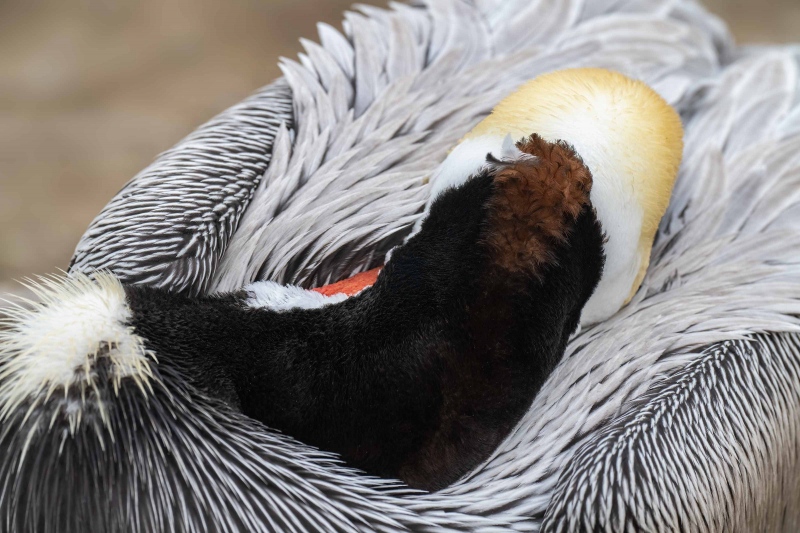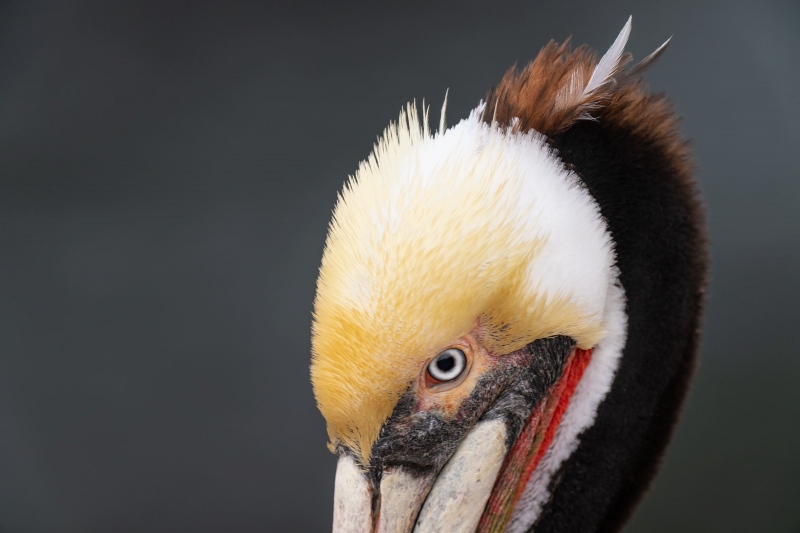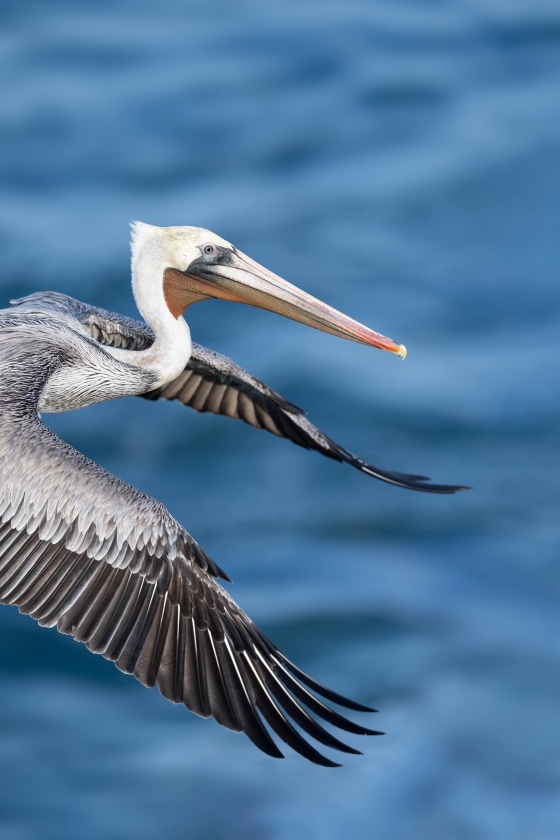What’s Up?
Stick Marsh was better than expected. Just before sunrise there were about 20 Roseate Spoonbills on the North Rookery Island. Most of those birds flew off at about 7:15am. Soon thereafter, there were spoonies flying in and out until about 8:15am. The birds were displaying, courting, and pulling leaves (but not sticks or branches). They seemed not to be disturbed at all by the big construction project. All in all, I would say that things are looking good for a successful breeding season. I finally heard from FWC and will share some good info when I get my laptop back. I worked on the tripod at 1200mm and likely got at least one really good flight image.
Today is Thursday 3 February. The forecast for this morning is for clear skies with a southeast breeze. I will be heading down to the lake early, keeping all of my images on a single card until I am back in business. The data recovery is on-going. I learned yesterday that my MacBook Pro will almost surely need to be repaired or replaced. If you need to get in touch with me before I get my laptop back and running, please shoot an e-mail to staffbaa@att.net with the “ATTN: artie” as the Subject Line. Or try me on my cell at 863-221-2372. Wherever you are, and whatever you are doing, I hope that you too have a great day. This blog post took about ninety minutes to prepare and makes 82 days in a row with a new one.
Please remember that you can find some great photo accessories (and necessities, like surf booties!) on Amazon by clicking on the Stuff tab on the orange/yellow menu bar above. On a related note, it would be extremely helpful if blog-folks who, like me, spend too much money on Amazon, would get in the habit of clicking on the Amazon logo link on the right side of each blog post when they shop online. As you might expect, doing so will not cost you a single penny, but would be appreciated tremendously by yours truly. And doing so works seamlessly with your Amazon Prime account.
Please remember that if an item — a Delkin flash card, or a tripod head — for example, that is available from B&H and/or Bedfords, is also available in the BAA Online Store, it would be great, and greatly appreciated, if you would opt to purchase from us. We will match any price. Please remember also to use my B&H affiliate links or to earn 3% cash back at Bedfords by using the BIRDSASART discount code at checkout for your major gear purchases. Doing either often earns you free guides and/or discounts. And always earns my great appreciation.
Songs About Love #1
Which song do you like best, Bette Midler’s The Rose?
Songs About Love #2
Or John Denver’s Perhaps Love (with Placido Domingo)?
|
|
|
This image was created on 16 January 2022 at La Jolla, CA. Standing at full height, I used the no-longer-available Induro GIT 304L/Levered-Clamp FlexShooter Pro-mounted Sony FE 600mm f/4 GM OSS lens with the Sony FE 1.4x Teleconverter, and The One, the Sony Alpha 1 Mirrorless Digital Camera.. ISO 2000. The exposure was determined by Zebras with ISO on the rear wheel: 1/125 sec. at f/8 (stopped down one stop) in Manual mode. AWB at 4:26:01pm on a cloudy afternoon. Tracking: Spot S AF-C with Bird-Eye/Face Detection performed very well in a difficult situation. Click on the image to enjoy the high-res version. Image #1: Brown Pelican Pacific-race hind-neck abstract |
Take a Crack at This One
In the Clean, Tight, Graphic (and Abstract) blog post here, I asked:
Is the bird in Image #1 the same individual as the bird in Image #2? How did you know?
Several folks noted correctly that the single white feather with a smaller gray feather next to it showed that both images featured the same pelican.
|
|
|
This image was created on 16 January 2022 at La Jolla, CA. Standing at full height, I used the no-longer-available Induro GIT 304L/Levered-Clamp FlexShooter Pro-mounted Sony FE 600mm f/4 GM OSS lens with the Sony FE 1.4x Teleconverter, and The One, the Sony Alpha 1 Mirrorless Digital Camera.. ISO 800. The exposure was determined by Zebras with ISO on the rear wheel: 1/80 sec. at f/5.6 (wide open) in Manual mode. AWB at 4:33:48pm on a cloudy afternoon. Tracking: Spot S AF-C with Bird-Eye/Face Detection performed very well in a difficult situation. Click on the image to enjoy the high-res version. Image #2: Brown Pelican Pacific-race adult face portrait |
My Favorite
The following appeared in the Clean, Tight, Graphic (and Abstract) blog post here:
I’ve made many hundreds of images like the one above over the past decade, but I’d never made one of a bird in the complete shade. Two things make this image very special to me. If you think that you know what they are, please leave a comment.
Like me, BPN member Kevin Hice liked Image #2 the best. He agreed that the matte gray background was superb. I am not sure if the background was water or the far cliff wall. In addition, I loved the unique combination of the single white feather and the smaller single gray feather on the top of the bird’s head.
|
|
|
This image was created on 19 January 2022. Standing at full height, I used the no-longer-available Induro GIT 304L/Levered-Clamp FlexShooter Pro-mounted Sony FE 600mm f/4 GM OSS lens and The One, the Sony Alpha 1 Mirrorless Digital Camera). IS 400. The exposure was determined via Zebras with ISO on the rear wheel: 1/2500 sec. at f/4 (wide open) in Manual mode. AWB at 8:52:04am on a mostly sunny morning. Tracking: upper center Zone AF-C performed very well. Be sure to click on the image to enjoy a higher-res version. Image #3: Brown Pelican vertical front-end flight take-off |
Head Angle (Very) Fine Point
In the When Something Unexpected Happens blog post here, I wrote, with regards to the image above, Only one tiny thing bugs me about this image and keeps it from being perfect. If you think that you know what it is, please leave a comment.
Though the pelican’s head is pretty much square to the sensor, i.e., to the back of the camera, it is slightly turned away from the line of its body. For me, that makes it a poor head angle.
To better explain. The bird’s body in flight is angled slightly toward me. Imagine yourself in a helicopter well above the bird. Now draw a line from the center of the bird’s tail to the top of its head. In a perfect world, the tip of the bill would be on the same line. It is however, turned slightly away. Yes, that is a very fine point, but it bugged me. What was the cause? The wind was from the northeast and that determined the light path as it lifted off into the breeze. The bird, however, was just beginning to turn left heading for the feeding spree to the southwest … So it goes.
Re-writing for Clarity
Thanks to David Policansky (AKA Doctor Fish)
In the Understanding Depth-of-Field with Telephoto Lenses blog post here, I wrote:
If you are at a given aperture and focal length the d-o-f will be identical only if and when the subject is the same size in the frame. So if you are at 400mm and you get twice as close to the bird, the d-o-f will be identical; only the angle of view will change. Your frame will include much more background at the shorter focal length; the image will look totally different, but the degree of sharpness of the background will be identical.
If you are photographing a given bird in a given situation with the same rig at the same aperture and you zoom out, d-o-f will increase dramatically according to the laws of optics as we saw above. And the same is true if you move away from the subject; d-o-f is a function of the distance to the subject: the closer you are, the less the d-o-f. And the farther away you are, the greater the d-o-f.
David Policansky/February 1, 2022 at 10:57am
Artie: I am having a hard time understanding this from you. Is there another way to say it? “If you are at a given aperture and focal length the d-o-f will be identical only if and when the subject is the same size in the frame. So if you are at 400mm and you get twice as close to the bird, the d-o-f will be identical; only the angle of view will change. Your frame will include much more background at the shorter focal length; the image will look totally different, but the degree of sharpness of the background will be identical.”
Arthur Morris/BIRDS AS ART: February 1, 2022 at 8:48pm
Hey David, I see that the problem is with some poor writing by me. I need to hit the sack and will get back to you with a re-write soon.
with love, artie
Arthur Morris/BIRDS AS ART/February 2, 2022 at 6:34am
Hey David, Is this any better:
If you are at a given aperture and work at two different focal lengths, the d-o-f will be identical if and only if the subject is the exact same size in the frame. If you are at 400mm and you get twice as close to the bird working at 200mm, the d-o-f will be identical.
The angle of view, however, will change. Your frame will include much more background at the shorter focal length; being a lot wider, the image will look totally different, but the degree of sharpness of the background will be identical.
LMK if that works and I will go back and change the text in the blog post. If not, call me this afternoon 🙂
thanks with love, artie
David Policansky/February 2, 2022 at 3:16pm
Thanks, Artie. That’s clear, but as you would say, only 100%. 🙂 David
Typos
With all blog posts, feel free to e-mail or to leave a comment regarding any typos or errors.

















DOF is a function of f stop and magnification. Greater distance with same lens, less magnification. Longer focal length at same distance, more magnification. Distance and focal length only matter as to how they are effecting magnification.
Thanks, Bob. It sounds to me like we are saying the same thing using different words.
with love, artie